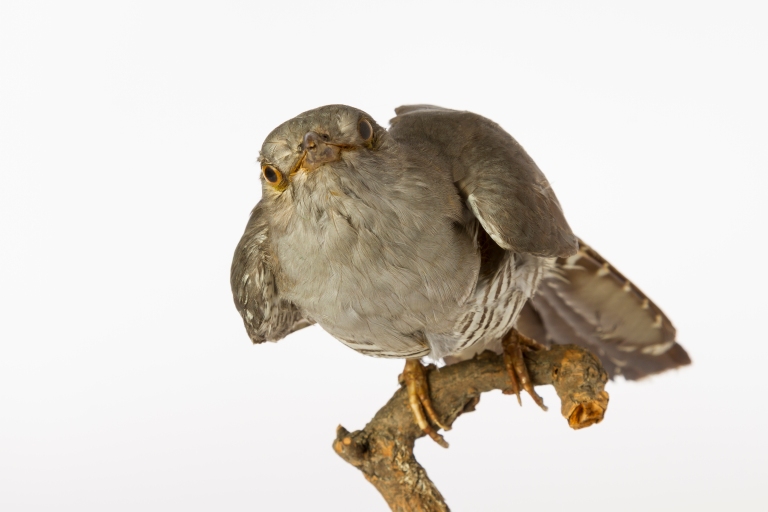Natalie Jones, Museum Conservator, writes:
It was during the decant and packing of the British Birds case in the museums lower gallery that I came across an unassuming, grey, dove sized bird. What struck me was that I was pretty certain I didn’t recognize the species yet when reading the label I realized it had an all too familiar name – the Cuckoo. The Radio 4 series Tweet of the Day summed up this bird perfectly; ‘the cuckoo is a paradox. Few other birds are so familiar, and yet so rarely seen.”
I had always imaged the Cuckoo to be a brightly coloured bird reminiscent of a Canary or Woodpecker perhaps due in part to the mechanical birds found marking the hour of the clocks it gives it name too. In reality the Cuckoo is a blue-grey colour with dark barred white underparts, with long wings and tail. Its size, plumage and barred belly is comparable with the Sparrowhawk so much so that it was once believed that Cuckoos turned into Sparrowhawks in winter.
The Cuckoo is a parasitic species, famously laying their eggs in the nests of others. The Reed Warbler, Meadow Pipit, Pied Wagtail and Dunnock are the usual unsuspecting foster parents, and soon find their own chicks ejected from the nest by the young cuckoo.
Its onomatopoeic name is derived from the call of the male bird – cuc-koo, but what I find remarkable about this bird is the call of its young. The Cuckoo chick is able to imitate the sound of its hosts young albeit much more loudly, fooling its host parents.
Once fledged, it is able to migrate 4,000 miles to the equatorial forests in the heart of Africa without ever meeting its parents. In fact it was only in 2011 that the Cuckoos winter quarters became known thanks to tiny tracking devices placed on the birds.
The British Trust for Ornithology is tracking the Cuckoo in the Cuckoo Project which recently featured in Springwatch. The species is also a focus of study at the University of Cambridge with scientists researching the evolved plumage patterns and hawk mimicry.
There has been a significant decline in Cuckoo numbers in recent years, so much so that it is now featured on the RSPB’s Red List. When asking friends and family they admit that its been many years since they last saw a cuckoo or even heard its familiar call. Perhaps it is partly for this reason combined with the Cuckoos surprisingly shy nature that meant I did not recognize the specimen during the packing process.



Reblogged this on Ouse Washes: The Heart of the Fens and commented:
Came across this: more information about the migratory Cuckoo; see also the BTO’s Paul Stancliffe’s recent guest post for the Ouse Washes Landscape Partnership scheme, http://ousewasheslps.wordpress.com/2014/07/07/where-are-all-the-cuckoos/